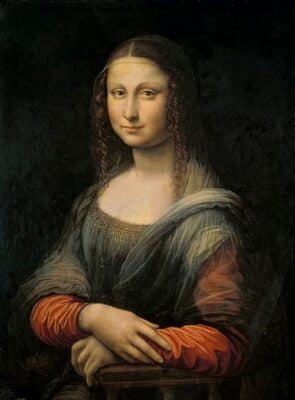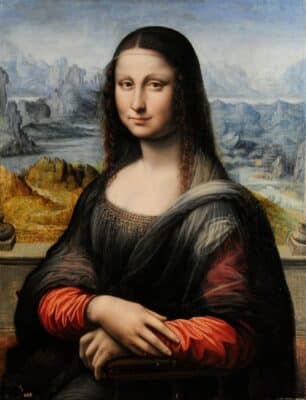The Students of Leonardo da Vinci
Students of Leonardo da Vinci
Leonardo da Vinci, left an indelible mark on the world of art. Renowned for his masterpieces, one of his most iconic works is the Mona Lisa, or La Gioconda, which resides in the Prado Museum in Madrid. Few are aware that da Vinci’s influence extended beyond his own brushstrokes. This blog post aims to explore the students of Leonardo da Vinci and their connection to the enigmatic painting housed in the Prado.
• The Mona Lisa’s Creator
The Prado’s Mona Lisa, sometimes referred to as the Joconde, is a version of the famous portrait believed to be painted by one of Leonardo da Vinci’s pupils. While the exact identity of the artist remains a mystery, the painting bears striking resemblance to da Vinci’s original masterpiece, currently displayed in the Louvre Museum in Paris. It is a testament to da Vinci’s influence and the legacy he left behind.
• Francesco de Melzi
Francesco de Melzi, often considered Leonardo da Vinci’s most talented pupil, played a significant role in the master’s studio. As da Vinci’s apprentice and assistant, Melzi absorbed his master’s techniques and artistic philosophy. Many art historians speculate that Melzi could be the artist behind the Prado’s Mona Lisa, based on his close association with da Vinci and his own artistic abilities.
• Gian Giacomo Caprotti
Gian Giacomo Caprotti known as Salai (Andrea Salai) whose talent and contributions have long intrigued art historians.
Salai was a versatile artist who worked closely with da Vinci for many years. While not as widely celebrated as Melzi, Salai possessed the skills necessary to create a remarkable replica of the Mona Lisa. His connection to da Vinci makes him a compelling candidate for the Prado painting’s authorship. He was serving as his apprentice and model. Salai’s distinct features are believed to have been portrayed in many of Leonardo’s works, including the original Mona Lisa.

• Giovanni Boltraffio
Giovanni Antonio Boltraffio was another talented pupil of Leonardo da Vinci. Boltraffio’s paintings showcase a remarkable attention to detail and a sense of harmony in composition, similar to his mentor’s style. His notable works include “Madonna and Child” and “Portrait of a Young Man.”
• Cesare da Sesto
Cesare da Sesto, a Milanese painter, studied under Leonardo da Vinci in the early 16th century. He became known for his religious and mythological paintings, incorporating a blend of da Vinci’s techniques with his own unique approach. His artwork titled “Leda and the Swan” is a prime example of his expertise in portraying the human form.
• The Prado’s Mona Lisa
Whether it was Melzi, Salai, or another talented artist from Leonardo da Vinci’s circle, the Prado’s Mona Lisa stands as a testament to the enduring influence of the master. By analyzing brushstrokes, techniques, and artistic nuances, experts can glean insights into the artistic education and craftsmanship imparted by da Vinci.
While the true identity of the artist may never be definitively determined, the painting serves as a testament to the enduring legacy of da Vinci’s teachings. The enigmatic smile and captivating gaze of the Prado’s Mona Lisa continue to captivate art enthusiasts worldwide, a testament to the genius of both the master and his talented students.


